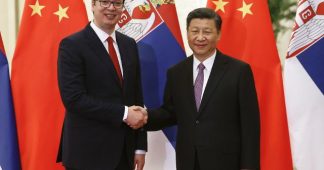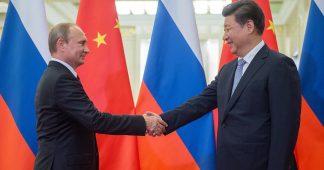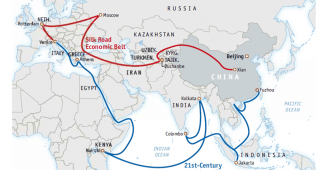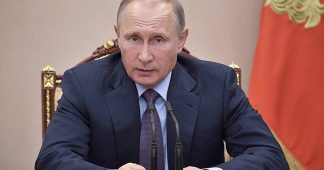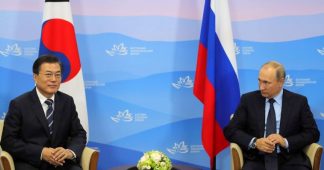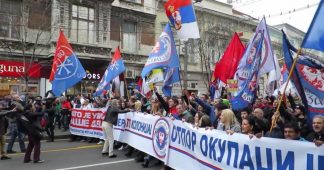Within the overall cooperation between China and Europe, Frankfurt has hosted the forum of representatives of news agencies, other media, and think-tank associations, marking the formal launch of Belt and Road Exchange of Economic and Financial Information Partnership (BREFIP). The forum was held at the initiative of the Chinese Agency for Economic Information (CEIS), an affiliation of the Xinhua news agency, and besides the Chinese, in its work have also participated representatives of major agencies, media, and think-tank organisations from Germany, France, Italy, United Kingdom, Serbia, Poland, Spain, Belgium, and Greece. Representatives from Serbia participating in this Forum are Živadin Jovanović, President of the Silk Road Connectivity Research (COREC) and Nenad Babić, Executive Director of TANJUG. The Forum was welcomed by Wang Shunqing, Chinese Consul General in Frankfurt (Germany).
The goal of Partnership is to enhance the exchange of information of relevance for the implementation of the Belt and Road Initiative, to improve availability of information to the potential participants in cooperation, to have joint researching projects and consultations.
As the first speaker at the session dedicated to the perspective of the China-Europe cooperation within the Belt and Road Initiative, Živadin Jovanović shared evaluation that, over the past five years, impressive results have been achieved within the format of China + 16 SEE countries, both in terms of infrastructural connections among people and in terms of developing direct communication between them, their getting closer and better understanding one another. This cooperation has strong foundations and an excellent perspective since it respects the national priorities of each partner, their equality and mutual benefits.
The cooperation format of China + 16 SEE countries is an integral part of the overall cooperation between China and Europe, which connects Eurasia from the Pacific to the Atlantic. It provides special contribution to the eradication of differences in economic development and the living conditions between the highly developed West and the less developed regions of Central, Eastern and South-Eastern Europe. The amplitude of these differences is corroborated by the fact that some 25 million citizens of the countries of Central, Eastern and South-Eastern Europe constitutes an ‘internal EU migration’ to the Western European countries. The results that countries of Central, Eastern and South-Eastern Europe achieve jointly with China in the 1+16 format are undoubtedly a major input to the attainment of economic and social balance, a factor of strengthening and certainly not a cause of weakening the intra-European integrations. At the same time, it is also a bridge that brings together Europe and Asia, rather than any competition or a threat to EU cohesion.
Jovanović has in particular emphasized the remarkable contribution of Serbia to the results of the overall cooperation in the 1+16 format by underlining that Serbia, for the first time in the recent history, has been given an opportunity to capitalize on her geographical position as a factor of economic growth, progress, and cross-border infrastructural integration. He undertook to illustrate his assessment by presenting the concrete accomplishments, from the Iron & Steel Smederevo and the “Mihailo Pupin” Bridge, to the Power Plant Kostolac B, and to Corridor 11 and fast railways Belgrade – Budapest. He stressed that that true partnership that lies in the core of the Belt & Road mega project is the proper formula both for the global economic growth and for the preservation of peace and stability. He shared his opinion that partnership in the modernisation of cross-border infrastructure, as well as partnerships in energy, finance, culture and the information exchange, are pillars of success of the Belt and Road Initiative and the 1+16 format.
Belgrade, 2 December 2017
THE SILK ROAD CONNECTIVITY RESEARCH CENTER
